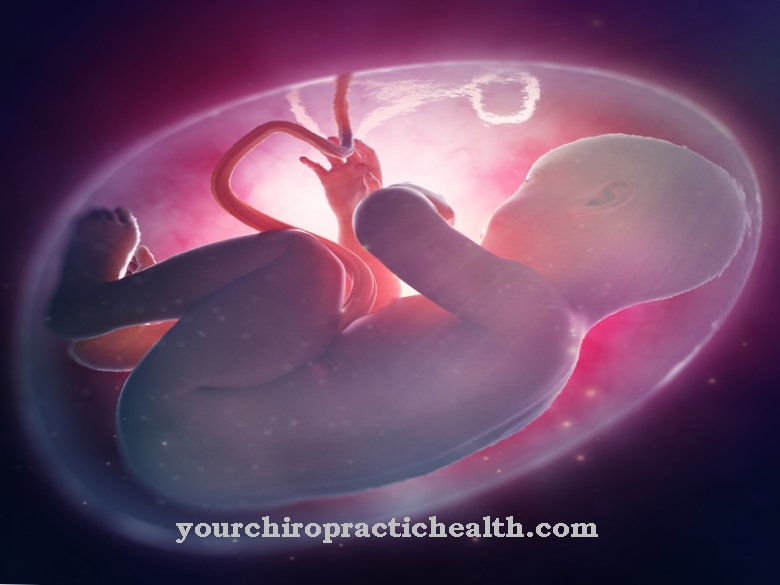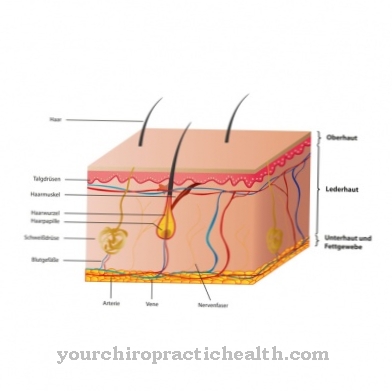The Brodmann areas are a division of the human cerebral cortex on the basis of the cell architecture. Areas with the same cellular structure form a Brodmann area. The brain is divided into 52 Brodmann areas.
What is a Brodmann area?
The brain of all living beings appears as a uniform and fat-rich, therefore white-colored mass. Although it has been assumed since ancient times that this organ is the seat of perception and thought, no information could be gained into the 19th century as to how these abilities could be realized in the brain.
It was only through special staining techniques developed by Antonio Golgi, Ramon y Cajal and Franz Nissl that the structure of the brain cells called neurons could be made visible. The Golgi color showed the great variety of forms of nerve cells and their manifold branches called dendrites and axons.
In addition to the diversity of the individual cell types, there are great local differences in the arrangement of these cells, which occur in clusters or layers of different thicknesses and densities. These quantitative differences can be shown well with the Nissl staining, the methodological basis of Korbinian Brodmann's work. Brodmann examined the arrangement, density and size of neurons in the human cortex and divided it into 52 areas based on local differences.
Anatomy & structure
If you look at the human brain from the outside, you can see above all the cortex (Latin: bark) with its characteristic walnut shape that overgrows the rest of the brain. The cortex was the last to emerge in the evolution of the brain and is most developed in humans.
The brain has a pattern of sulci (lat. Trenches) and gyri (large windings) as well as the sulcus centralis (lat. Middle trench) which separates the two halves of the brain. On the basis of these characteristics, each half of the brain can be divided into 4 brain lobes (lat. Lobi), the anterior (frontal), the upper (parietal), the rear (occipital) and the lateral (temporal) lobes. This classification is important for the localization of neuronal brain structures, but not for understanding their function.
In order to better link the anatomy of the cerebral cortex with its function, Korbinian Brodmann stained all cell bodies with the Nissl stain and examined sections of the brain with the microscope. The cortex has a layering of cells with 3 to 5 layers, the thickness and density of which can vary, as can the size of the cell body. Using this microanatomy, Brodmann was able to identify 52 areas, which he labeled with consecutive numbers. Brodmann published his results in 1909 in the text “Comparative localization theory of the cerebral cortex”.
Brodmann succeeded in this classification without developing a deeper understanding of the cell types and their connection in the individual areas. Developing this understanding is the main task of modern neuroscience.
Function & tasks
By comparing the cell structure of different brain areas, conclusions cannot be drawn about the function and at the time of Brodmann, little was known about the exact role of different brain regions in humans.
In the years following Brodmann's work, extensive knowledge about the function of the various brain regions began to be gathered. The effects of brain damage, such as the abundance of both world wars, were the first extensive sources of neuromedical research. After the Second World War, the specific electrical stimulation of different brain areas during and after operations served to explain the function of different brain regions, these were supplemented with animal experiments. Nowadays, most of the Brodmann areas can be assigned precise functions.
In general, certain types of functions can be assigned to the four cerebral lobes already discussed. The frontal cortex is associated with our personality and our thinking, damage to this brain area leads to personality changes and mental retardation. The parietal parietal lobe includes our body's motor skills and sensory functions, while the so-called visual cortex is located in the occipital lobe at the back of the head. On the sides, in the temporal lobe of the brain, the abilities to hear and speak as well as parts of the memory are located.
The motor cortex that controls our limbs corresponds to Brodmann area 7, our ability to see, area 17 and areas 44 and 45 correspond to Broca's area, the damage of which is accompanied by a loss of linguistic expression.
You can find your medication here
➔ Medicines against memory disorders and forgetfulnessDiseases
The classification of the Brodmann areas primarily serves neither for diagnosis nor for any therapeutic intervention. By identifying the corresponding functions of the Brodmann areas, however, they have become an important diagnostic tool that can provide information about the location and size of brain damage.
With the correspondence of function and brain area, for example, the location of the stroke can be determined based on the impairment in stroke patients. In modern imaging processes, which, like functional magnetic resonance tomography, record the activity of the brain, knowledge of the Brodmann areas is important because it allows the signals to be assigned to brain functions.
When planning surgical interventions on the brain, the Brodmann areas and their functions are used to weigh up how an operation can be carried out without impairing particularly important brain functions. The combination of the most modern magnetic brain stimulation techniques (transcranial magnetic stimulation) with imaging methods makes it possible to estimate which areas of a Brodmann area have already been destroyed and can therefore be surgically removed and which cannot.
The division of the brain into Brodmann areas is therefore widely used in modern neurobiological diagnostics and research.



























